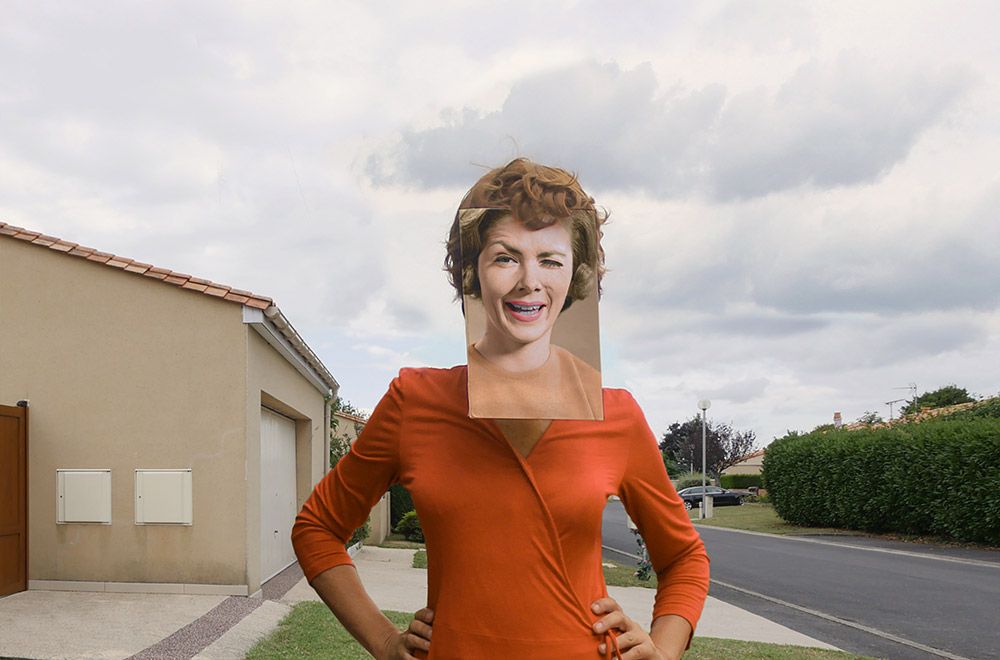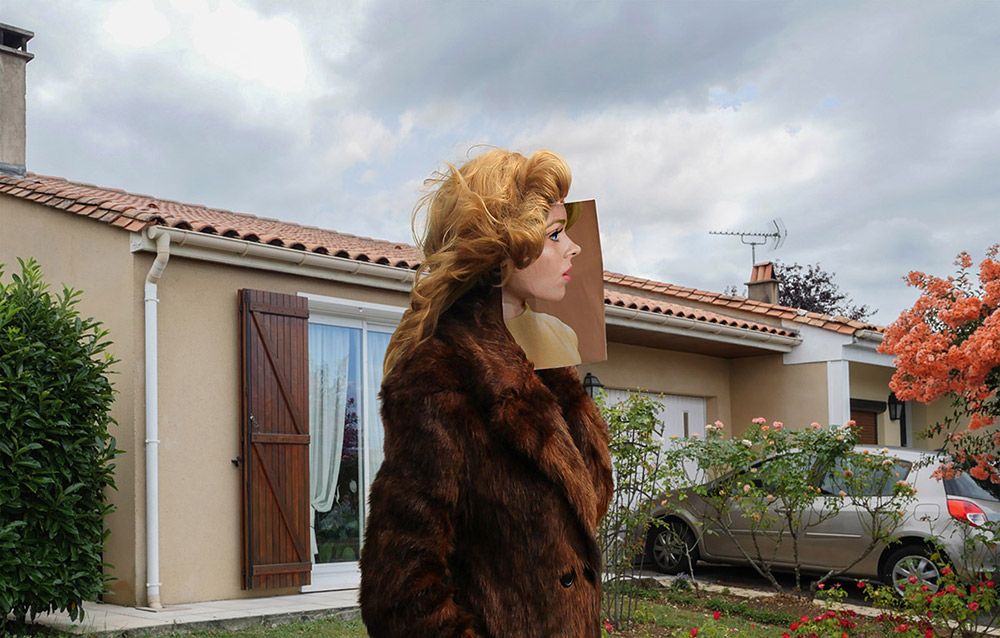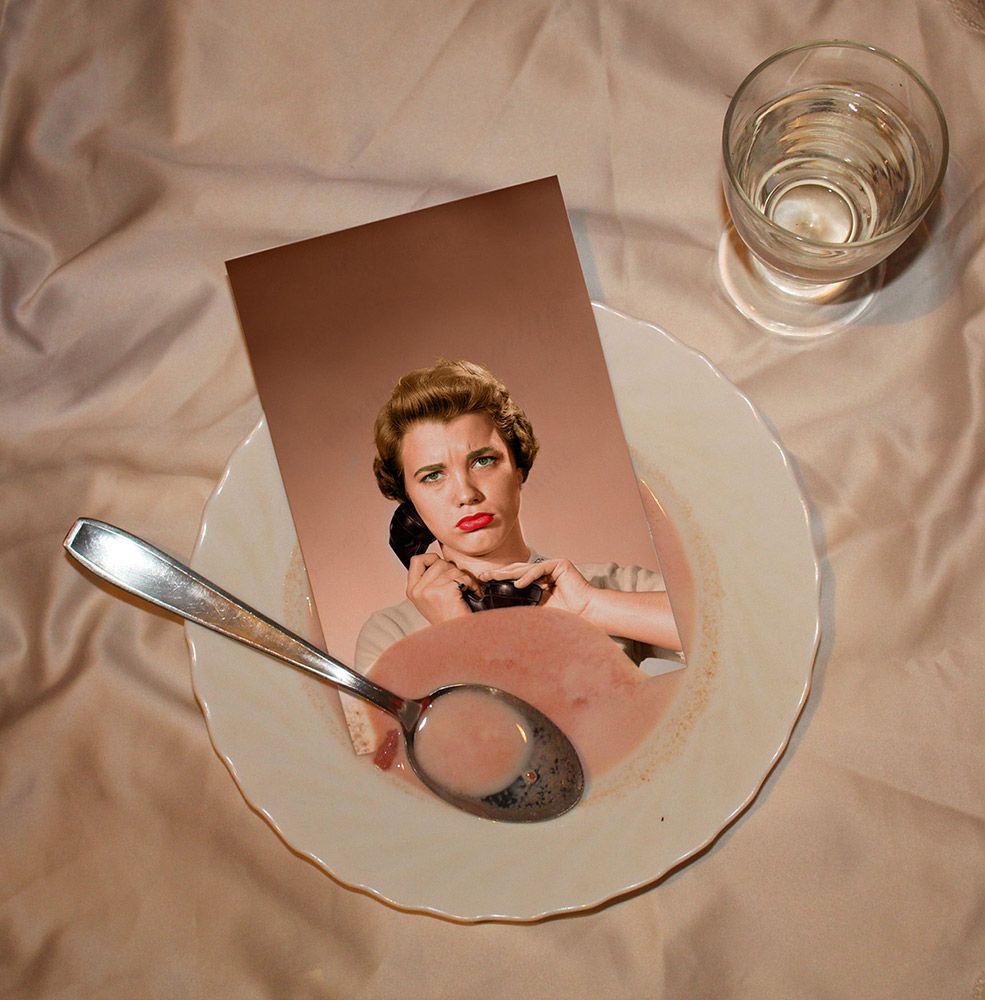blog
Interview with photographer Cristina Rizzi Guelfi

F-Stop Magazine: How did you first become involved in photography and what led to you working in this medium as an artist?
Cristina Rizzi Guelfi: Despite my scientific and legal studies, art and literature have always played a primary role in my life, after university I began to follow this passion of mine. I started writing short stories but I wanted to combine images with words, so I came to photography. But in the end I preferred it to writing: more direct. An image can replace a thousand words and add a thousand different ones, depending on who looks at it.
F-Stop Magazine: The current issue of F-Stop Magazine includes images from your project “we need a face [?],” can you tell us about this project and how it came about?
CRG: The series we need a face [?] Was created to ironize the widespread practice of obsession with selfies, replacing faces with photographs acquired from a bank of images from the 1950s and 1960s. The obsession with selfies is a practice that has spread globally in recent years, so much so that it is the subject of discussion among psychologists and psychiatrists to understand if it was appropriate to identify it as a real obsessive-compulsive disease. The responsibility for this compulsion would not be attributed to the smartphone or the selfies themselves but to social networks.

F-Stop Magazine: Can you discuss your process for making these images or your creative process more generally?
CRG: Although the topic is unique, the images have a story of their own, I see them as episodes of a story as a way of communicating a still moment from a story, frozen in time. I don’t like static images very much so I try to make the model seem almost in motion. The “still image” is definitely a great influence in my work. I am fascinated by the contradiction of an image that can be both moving and stationary. I find the locations by turning, sometimes the photo is born just seeing a place, a house even just a fence.
For the series we need a face [?] I wanted to combine 50s/60s faces with funny expressions, the photos were literally stuck to the model’s face.
F-Stop Magazine: How do you choose what or who to photograph, what are you looking to capture?
CRG: More than anything else it was powered by cinema. Since I was a child I have always been a compulsive cinephile. I am attracted to old films and B-Movies where the absurd is associated with the everyday, where colors are a priority. I’ve always found humor in the mundane associated with absurdity, which is why I love Hitchcock who was a master at creating a creepy effect in a familiar environment, like Kubrick. Probably because having started with writing, my intention is to tell a story with a couple of images. But with images there is a wide range of imagination, whoever looks can create the story they want, want or actually see and the story becomes personal for each non-imposed individual.

F-Stop Magazine: Do you have a favorite image in this series? If so, which one and why is it the image that speaks to you most?
CRG: There isn’t a photograph that I prefer, or rather let’s say that I usually always love the last one I shoot, but not for the image itself, but for the message I want to express.
F-Stop Magazine: How would you describe your work to someone viewing it for the first time?
CRG: Describing my work is always difficult, it is an enigma that triggers the imagination of an untold story. I would like those who look at my photographs to find humor in the banal, I would like to put people in a space where they are extremely uncomfortable but at the same time smile at the situation.
F-Stop Magazine: Are you working on any other projects currently?
CRG: No, for the moment I’m developing my latest series, but in my head there are at least six or seven other projects.
F-Stop Magazine: What photographers or other artists inspire you?
CRG: I love Cindy Sherman and Martin Parr as photographers, my main inspiration is cinema but that would be a very long list. I can say that lately I have been fascinated by the work of Věra Chytilová e
Pina Bausch.
To see more of Cristina Rizzi Guelfi’s work, visit her on Instagram @cristinarizziguelfi
Location: Online Type: Featured Photographer, Interview
Events by Location
Post Categories
Tags
- Abstract
- Alternative process
- Architecture
- Artist Talk
- artistic residency
- Biennial
- Black and White
- Book Fair
- Car culture
- Charity
- Childhood
- Children
- Cities
- Collaboration
- Community
- Cyanotype
- Documentary
- Environment
- Event
- Exhibition
- Faith
- Family
- Fashion
- Festival
- Film Review
- Food
- Friendship
- FStop20th
- Gender
- Gun Culture
- Habitat
- Hom
- home
- journal
- Landscapes
- Lecture
- Love
- Masculinity
- Mental Health
- Migration
- Museums
- Music
- Nature
- Night
- nuclear
- p
- photographic residency
- Photomontage
- Plants
- Podcast
- Portraits
- Prairies
- Religion
- River
- Still Life
- Street Photography
- Tourism
- UFO
- Water
- Zine

Leave a Reply